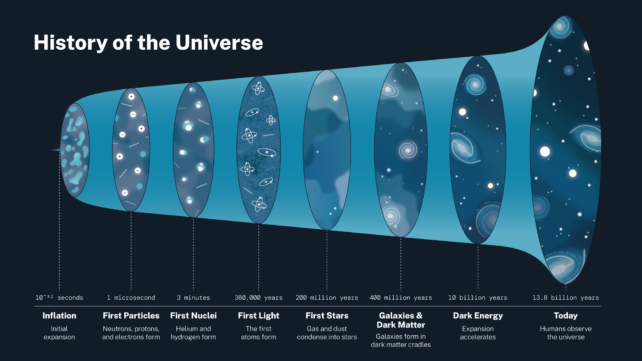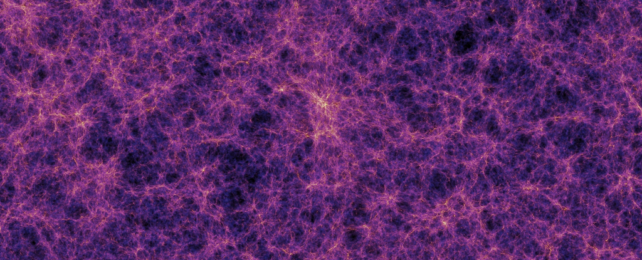There might not be a mysterious 'dark' force accelerating the expansion of the Universe after all. The truth could be much stranger – bubbles of space where time passes at drastically different rates.
The passage of time isn't as constant as our experience with it suggests. Areas of higher gravity experience a slower pace of time compared with areas where gravity is weaker, a fact that could have some pretty major implications on how we compare rates of cosmic expansion according to a recently developed model called timescape cosmology.
Discrepancies in how fast time passes in different regions of the Universe could add up to billions of years, giving some places more time to expand than others. When we look at distant objects through these time-warping bubbles, it could create the illusion that the expansion of the Universe is accelerating.
Two new studies have analyzed more than 1,500 supernovae to investigate how likely the concept could be – and found that the timescape model might be a better fit for observations than our current best model.
The standard model of cosmology does a pretty good job of explaining the Universe – provided we fudge the numbers a bit. There doesn't seem to be enough mass to account for the gravitational effects we observe, so we invented an invisible placeholder called dark matter.
There also seems to be a strange force that counteracts gravity, pushing the cosmos to expand at accelerating rates. We don't know what it is yet, so in the same spirit we dubbed it dark energy. All of this comes together, along with ordinary matter, to form what we call the lambda cold dark matter (ΛCDM) model.

The problem is that this model uses a simplified equation that assumes the whole Universe is smooth, and expands at the same speed everywhere. But it's far from smooth out there: we see a colossal cosmic web, criss-crossed by filaments of galaxies separated by vast voids emptier than we can comprehend.
Timescape cosmology takes that 'lumpiness' into account. More matter means stronger gravity, which means slower time – in fact, an atomic clock located in a galaxy could tick up to a third slower than the same clock in the middle of a void.
When you stretch that over the huge lifespan of the Universe, billions more years may have passed in the voids than in the matter-dense areas. A mind-boggling implication of that is that it no longer makes sense to say that the Universe has a single unified age of 13.8 billion years. Instead, different regions would have different ages.
And since so much more time has passed in the voids, more cosmological expansion has taken place there. Therefore, if you look at an object on the far side of a void, it would appear to be moving away from you much faster than something on this side of the void. Over time, these voids take up a larger proportion of the Universe, creating the illusion of an accelerating expansion, without needing to conjure up any dark energy.
In 2017, astronomers from the University of Canterbury in New Zealand tested timescape cosmology against observations, and found that it was a slightly better fit than ΛCDM to explain cosmic expansion. More data was needed.
So for the new studies, an astronomy team from the University of Canterbury and the German University of Heidelberg has collected and analyzed that extra data in the form of a catalog of 1,535 Type Ia supernovae. These explosions shine with a predictable brightness every time, so shifts in their light can reliably reveal distance, speed and direction of movement. As such, they're often called 'standard candles.'
This time, the astronomers say they've found "very strong evidence in favor of timescape over ΛCDM." This suggests a potential need to rethink the foundations of cosmology.
"Dark energy is a misidentification of variations in the kinetic energy of expansion, which is not uniform in a Universe as lumpy as the one we actually live in," says David Wiltshire, a physicist at the University of Canterbury.
"The research provides compelling evidence that may resolve some of the key questions around the quirks of our expanding cosmos. With new data, the Universe's biggest mystery could be settled by the end of the decade."
Both studies were published in the journal Monthly Notices of the Royal Astronomical Society.
